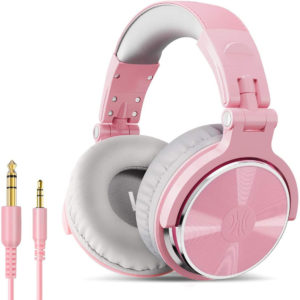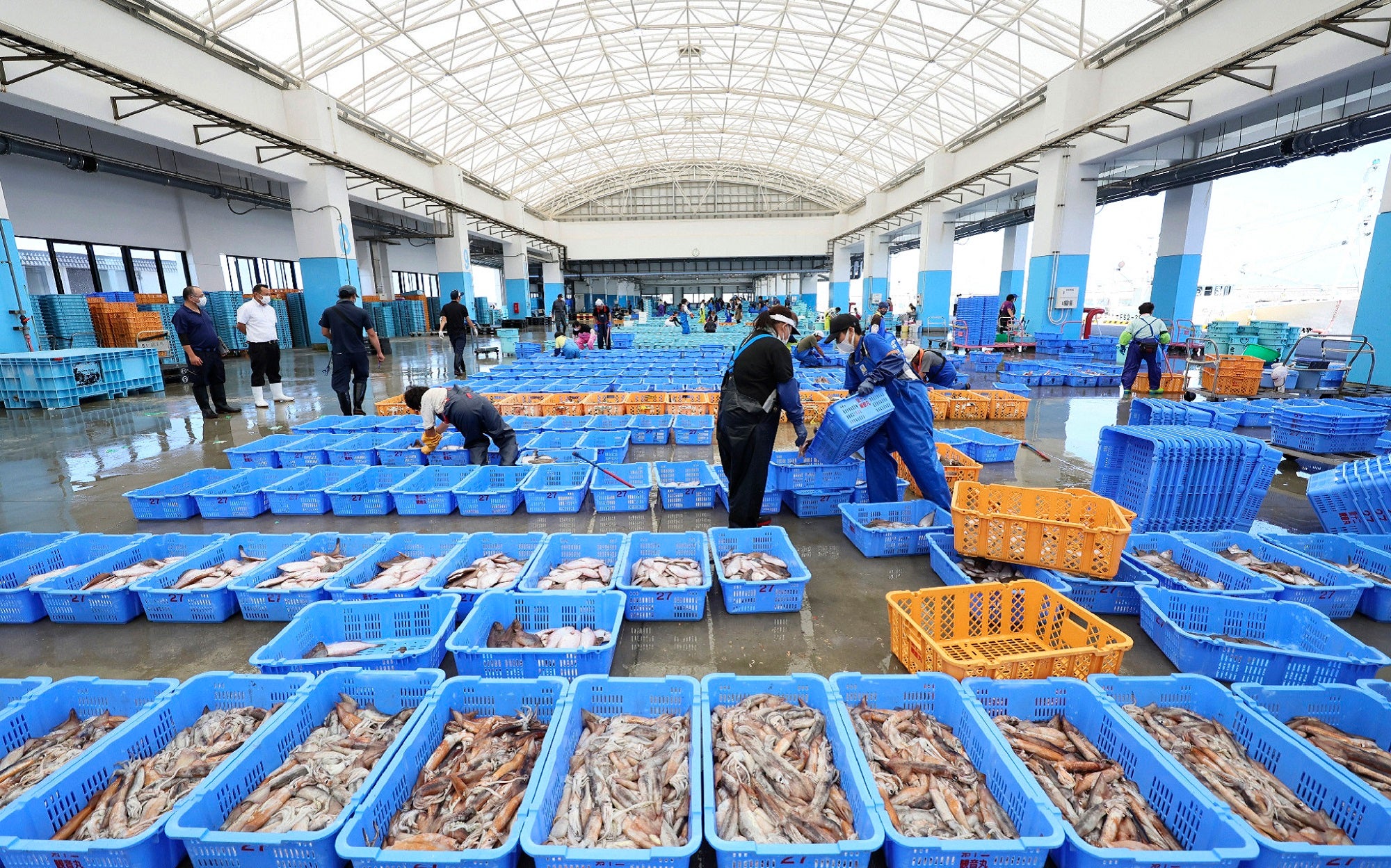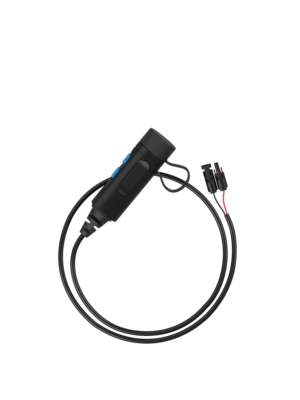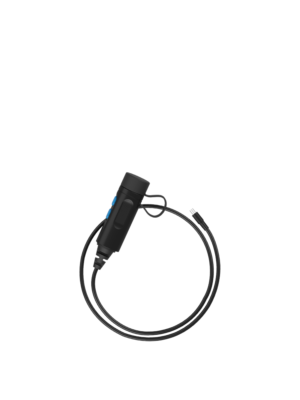Fukushima water releases prompt debate over tritium in seafood
On October 5, operators of Japan’s derelict Fukushima Daiichi nuclear power plant resumed pumping out wastewater held in the facility for the past 12 years. Over the following two-and-a-half weeks, Tokyo Electric Power Company (TEPCO) plans to release around 7,800 tons of treated water into the Pacific Ocean.
This is TEPCO’s second round of discharging nuclear plant wastewater, following an initial release in September. Plans call for the process, which was approved by and is being overseen by the Japanese government, to go on intermittently for some 30 years. But the approach has been controversial: Polls suggest that around 40 percent of the Japanese public opposes it, and it has sparked backlash from ecological activists, local fishermen, South Korean citizens, and the Chinese government, who fear that radiation will harm Pacific ecosystems and contaminate seafood.
Globally, some scientists argue there is no cause for concern. “The doses [or radiation] really are incredibly low,” says Jim Smith, an environmental scientist at the University of Portsmouth in the UK. “It’s less than a dental X-ray, even if you’re consuming seafood from that area.”
Smith vouches for the water release’s safety in an opinion article published on October 5 in the journal Science. The International Atomic Energy Agency has endorsed TEPCO’s process and also vouched for its safety. But experts in other fields have strong reservations about continuing with the pumping.
“There are hundreds of clear examples showing that, where radioactivity levels are high, there are deleterious consequences,” says Timothy Mousseau, a biologist at the University of South Carolina.
[Related: Nuclear war inspired peacetime ‘gamma gardens’ for growing mutant plants]
After a tsunami struck the Fukushima nuclear power plant in 2011, TEPCO started frantically shunting water into the six reactors to stop them from overheating and causing an even greater catastrophe. They stored the resulting 1.25 million tons of radioactive wastewater in tanks on-site. TEPCO and the Japanese government say that if Fukushima Daiichi is ever to be decommissioned, that water will have to go elsewhere.
In the past decade, TEPCO says it’s been able to treat the wastewater with a series of chemical reactions and cleanse most of the contaminant radioisotopes, including iodine-131, cesium-134, and cesium-137. But much of the current controversy swirls around one isotope the treatment couldn’t remove: tritium.
Tritium is a hydrogen isotope that has two extra neutrons. A byproduct of nuclear fission, it is radioactive with a half-life of around 12 years. Because tritium shares many properties with hydrogen, its atoms can infiltrate water molecules and create a radioactive liquid that looks and behaves almost identically to what we drink.
This makes separating it from nuclear wastewater challenging—in fact, no existing technology can treat tritium in the sheer volume of water contained at Fukushima. Some of the plan’s opponents argue that authorities should postpone any releases until scientists develop a system that could cleanse tritium from large amounts of water.
But TEPCO argues they’re running out of room to keep the wastewater. As a result, they have chosen to heavily dilute it—100 parts “clean” water for every 1 part of tritium water—and pipe it into the Pacific.
“There is no option for Fukushima or TEPCO but to release the water,” says Awadhesh Jha, an environmental toxicologist at the University of Plymouth in the UK. “This is an area which is prone to earthquakes and tsunamis. They can’t store it—they have to deal with it.”
Smith believes the same properties that allow tritium to hide in water molecules means it doesn’t build up in marine life, citing environmental research by him and his colleagues. For decades, they’ve been studying fish and insects in lakes, pools, and ponds downstream from the nuclear disaster at Chernobyl. “We haven’t really found significant impacts of radiation on the ecosystem,” Smith says.
[Related: Ultra-powerful X-rays are helping physicists understand Chernobyl]
What’s more, Japanese officials testing seawater during the initial release did not find recordable levels of tritium, which Smith attributes to the wastewater’s dilution.
But the first release barely scratches the surface of Fukushima’s wastewater, and Jha warns that the scientific evidence regarding tritium’s effect in the sea is mixed. There are still a lot of questions about how potent tritium effects are on different biological systems and different parts of the food chain. Some results do suggest that the isotope can damage fish chromosomes as effectively as higher-energy X-rays or gamma rays, leading to negative health outcomes later in life.
Additionally, experts have found tritium can bind to organic matter in various ecosystems and persist there for decades. “These things have not been addressed adequately,” Jha says.
Smith argues that there’s less tritium in this release than in natural sources, like cosmic rays that strike the upper atmosphere and create tritium rain from above. Furthermore, he says that damage to fish DNA does not necessarily correlate to adverse effects for wildlife or people. “We know that radiation, even at low doses, can damage DNA, but that’s not sufficient to damage how the organism reproduces, how it lives, and how it develops,” he says.
“We don’t know that the effects of the water release will be negligible, because we don’t really know for sure how much radioactive material actually will be released in the future,” Mousseau counters. He adds that independent oversight of the process could quell some of the environmental and health concerns.
Smith and other proponents of TEPCO’s plan point out that it’s actually common practice in the nuclear industry. Power plants use water to naturally cool their reactors, leaving them with tons of tritium-laced waste to dispose. Because tritium is, again, close to impossible to remove from large quantities of H20 with current technology, power plants (including ones in China) dump it back into bodies of water at concentrations that exceed those in the Fukushima releases.
“That doesn’t justify that we should keep discharging,” Jha says. “We need to do more work on what it does.”
If tritium levels stay as low as TEPCO and Smith assure they will, then the seafood from the region may very well be safe to eat. But plenty of experts like Mousseau and Jha don’t think there is enough scientific evidence to say that with certainty.
Please Support Our Sponsors
Solar Power Generator Discounts Along With Free Shipping
- 10% OFF for Jackery Solar Generator 2000 Pro Series with code "JADEAL"
- 10% OFF for Jackery SolarSaga 200W Solar Panel with code "JADEAL"
- 10% OFF for Jackery Solar Generator 1500 Series with code "JADEAL"
- 10% OFF for Jackery Solar Generator 1000 Series with code "JADEAL"
- 10% OFF for Jackery Explorer 1500 Portable Power Station with code "JADEAL"
- 10% OFF for Jackery Explorer 1000 Pro Portable Power Station with code "JADEAL"
- 10% OFF for Jackery Explorer 500 Pro Portable Power Station with code "JADEAL"
- 10% OFF for Jackery Explorer 300 Pro Portable Power Station with code "JADEAL"
- 10% OFF for Jackery SolarSaga 100W Solar Panel with code "JADEAL"

The University of Georgia is represented by the Georgia Bulldogs . The Bulldogs participate in the Southeastern Conference's (SEC) Eastern Division of the NCAA.
They play their home games in the storied Sanford Stadium in Athens, Georgia. The first season in Georgia was in 1892. In 1942, 1980, and 2021, the Georgia Bulldogs won three national championships.
The Georgia Bulldogs have additionally been crowned the National Champion in four additional seasons by at least one polling organization (1920, 1927, 1946 and 1968).
The Georgia Bulldogs are tied for second place in conference history with their 15 conference titles, including 13 SEC titles, and their 59 bowl appearances, which ranks second all-time.
In addition, the program has produced five top picks in the National Football League (NFL) draft, two Heisman Trophy winners, numerous winners of various national honors, and many others.

Longhorns football represents the University of Texas in Austin often known as Texas, UT or the Texas Longhorns. The Longhorns represent the Big 12 Conference in the NCAA Division. They play in Austin, Texas, at the Darrell K. Royal-Texas Memorial Stadium.
The Texas Longhorns are ranked third and seventh, respectively, in terms of all-time wins and win-loss records, with over 900 victories and an overall win-loss percentage of.705.
The legendary program also boasts four national titles, 32 conference titles, 100 First Team All-Americans, and two Heisman Trophy winners.
Get your Texas Longhorns Revival T-Shirt today. The Texas Longhorns Rustic Revival shirt is also a fan favorite.
Many college sports fans like to wear their gear all around town, get your Texas Longhorns Centered gear and show your support.





 Gettr
Gettr














